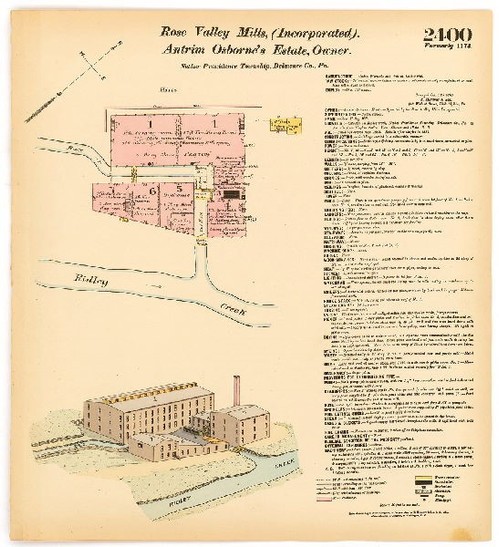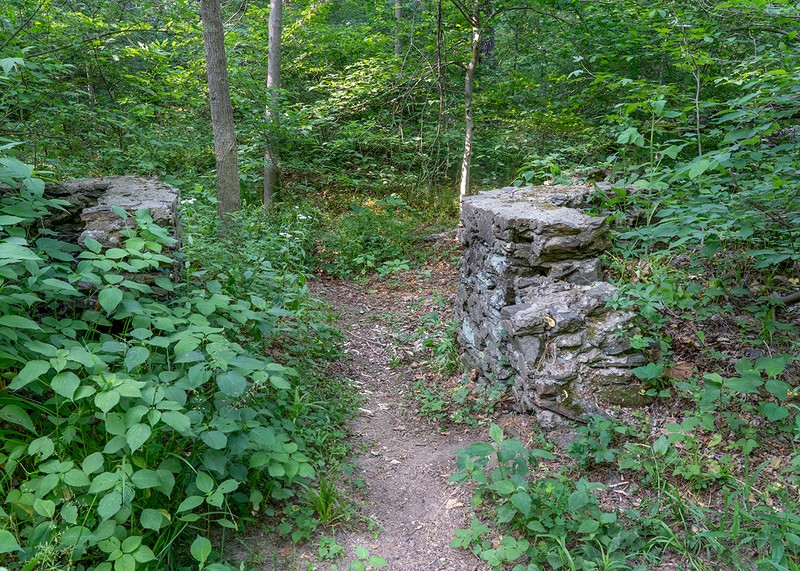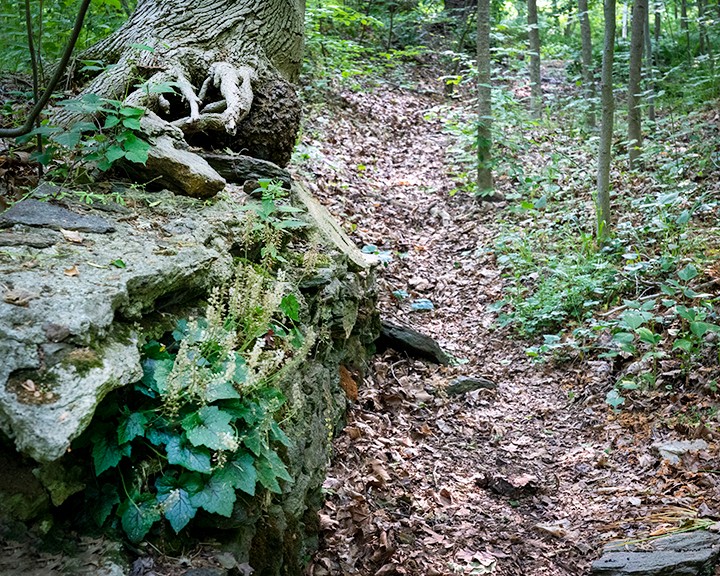Saul Preserve Points of Interest S1 Mill Race
Introduction
Text-to-speech Audio
As you proceed on the Old Mill Trail from the Saul Preserve kiosk, you will see on your right the remains of a stone mill race. The mill race was originally constructed in 1789 of stone from the nearby stone quarry to divert water from Ridley Creek to the Old Mill. This was the head race, the part of the mill race that turned the mill wheel. Further past the gap in the mill race, which is the remanent of a sluice gate opened in high water to protect the mill from flooding, was the mill dam on Ridley Creek. The tail race to return the water from the mill to Ridley Creek no longer exists, but would have crossed where the parking lot is today.
Images
Rose Valley Mills

Saul Preserve Millrace 1

Saul Preserve Millrace 2

Backstory and Context
Text-to-speech Audio
A snuff mill owned by Nicholas Stimmel was first built here in 1789. His son Phillip had a tobacco store in Philadelphia, and ownership of the mill passed to him in 1794. In 1814 the mill was sold to William Smith, and then in 1818 it was sold to John White who was the first to use the name Rose Valley Mills. Until 1821 he ground bark as a fever medicine, but the growing use of quinine put him out of business. Park Shee rented the mill from 1825 until 1850 and operated it as a paper mill. When Ridley Creek rose 20 feet above flood stage on August 5th, 1843, two small buildings associated with the mill were swept away, and the breast of the mill dam was damaged. For nearly 20 years the mill was abandoned.
Antrim Osbourne bought the abandoned mill in 1861, and repaired the dam and mill race. Osbourne drove out the bats and owls from the original mill, and built a larger woolen mill from stone in the adjacent cliff. His business, by 1873, had 2300 spindles, 100 looms and 15 sets of cards (for spinning). To house his many employees, Osbourne built two sets of houses on opposite sides of Rose Valley Road. On the right, there are three double houses of six rooms each, which were the mill manager's homes. On the left, a large tenement style building which was were the workers lived. It was eventually divided into six homes, and is now three separate properties.
In 1862, Osbourne built his own home on a hill overlooking the woolen mill. He lived there until his death in 1890. Five years earlier, in 1885, the mill suffered a devastating fire and closed. Osbourne's wife tried to revive the mill without success, in part due to improvements in steam and then electric power, she eventually sold off all the property.
In 1905, Charles Shoen, father-in-law of William Price's partner Hawley McLanahan, purchased Osbourne's house and had Price convert it into a magnificent residence, still known today as "Shoenhaus". Shoen made his fortune with patented pressed steel railroad cars. Philadelphia lawyer Maurice Saul purchased the house in 1925, made additional improvements over the next two years, and eventually amassed 400 acres.
The mill across Rose Valley Road, originally called Hutton's Mill, ground livestock feed and eventually produced sandpaper and bobbins. Osbourne purchased it in 1879, and during his time it turned out yarns and material for underwear. It became Guild or Artsman's Hall in 1901 and has been Hedgerow Theatre since 1923
Sources
Ham, Peter. The History of Rose Valley. Volume 1. Rose Valley, PA. Rose Valley Borough, 1974.
PAB - Philadelphia Architects and Buildings
Ron Ploeg
Ron Ploeg
